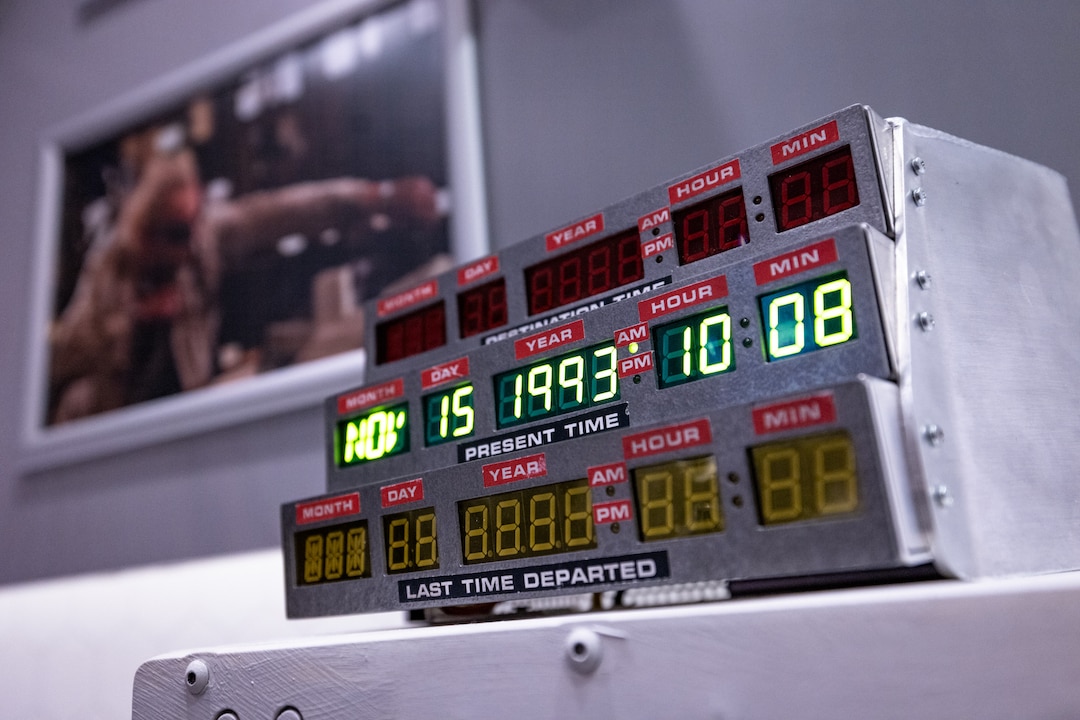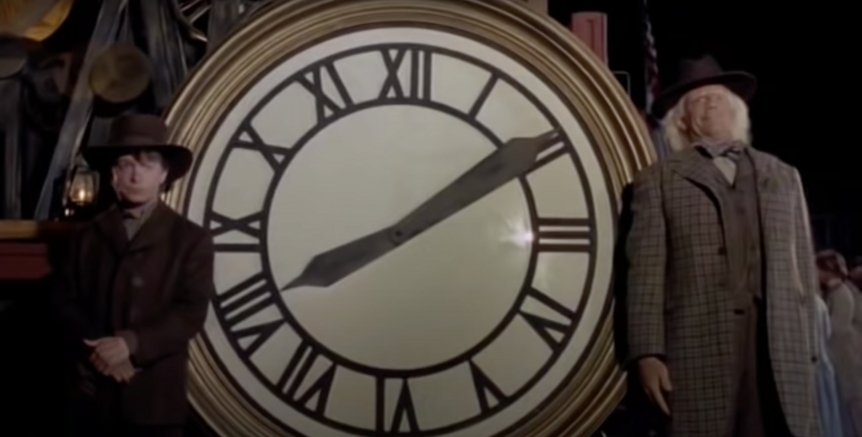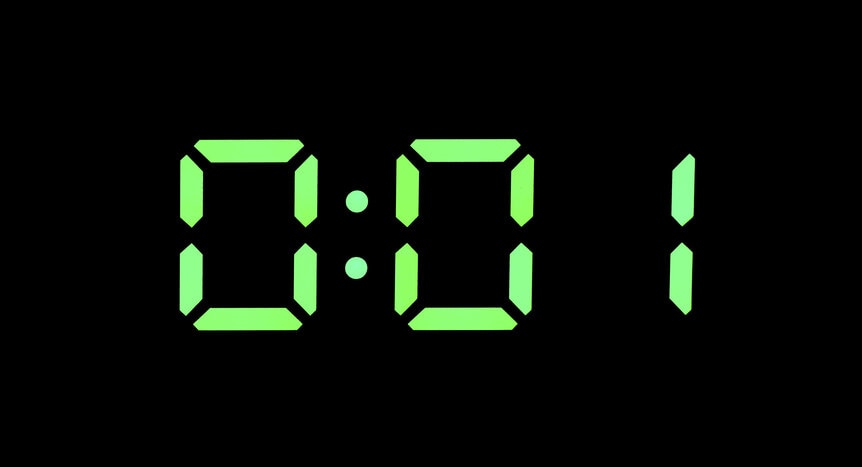Create a free profile to get unlimited access to exclusive videos, sweepstakes, and more!
We Might Go Back to the Future with the World's First Negative Leap Second
The world's spin is changing and our clocks aren't happy.

How long is a second? It’s not very long, snap your fingers and one has passed, but how long is it exactly? Is it an equal division of the day, 1/86,400 the time it takes the planet to revolve around its axis, or is it some unit of true time, irrespective of the motions of planets? One Mississippi?
It seems like a simple question, but it’s deceptively complicated, and it’s the sort of question that needs answering whether you’re Marty McFly traveling the temporal turnpikes in Back to the Future or a regular Joe just driving to work. The trouble is that a second can be measured in all of the above ways relatively accurately. You won’t run into any trouble today or tomorrow, but over time, your measurements will start to diverge, and you might not know what time it really is.
Solving that problem is the job of the International Telecommunication Union (UTI), and they do it by setting and maintaining Coordinated Universal Time (UTC). Every other clock in the world sets its time by adding or subtracting from UTC, based on their timezone. The UTI provides a reference clock made up of the averaged time from hundreds of incredibly accurate reference clocks. Despite all that, they still need to make adjustments every once in a while, adding a second at strategic places to correct for timekeeping errors. Now, the timekeepers might need to take a second away, deploying the first negative leap second in history.
For More on Time:
Understanding Leap Years: Why February Sometimes Gets an Extra Day
The World's Timekeepers Voted Unanimously to Do Away with Leap Seconds
NASA Proposes Moon Standard Time with Slightly Shorter Seconds
How Does the International Telecommunication Union Measure the Flow of Time?
We have two main ways of measuring time, both of which are accurate in their own unique ways. The first method is astronomical time, based on the Earth’s rotation and orbit around the Sun. The amount of time it takes the Earth to orbit the Sun is equal to a year, and the amount of time it takes to spin around its axis is a day. We’ve been keeping time this way for thousands of years and it works for the day to day, but it falls apart over long enough stretches. There’s a whole complicated process involved in syncing our calendars with astronomical time which involves the introduction of an extra day (almost) every four years.
The second way we tell time is by measuring the oscillations of physical things. Rather than the movements of planets, we look at the movements of crystals or atoms. Common wrist watches rely on quartz crystals, which oscillate with a timekeeping accuracy of about half a second per day. Over the course of a month, they’ll drift about 15 seconds in one direction or the other. Since the 1960s, we’ve had atomic clocks which rely on the oscillations of atoms and are much more accurate.
Modern atomic clocks use the vibrations of atomic cesium as the standard interval by which we measure the flow of time. Today, our best (most accurate) definition of a second is 9,192,631,770 oscillations of a cesium atom. Using cesium as our temporal metronome, we can measure the passage of time with a drift of about 1 second every 3 million years.
If Atomic Clocks Are So Accurate, Why Do We Need Leap Seconds?
At any given moment, those two methods of timekeeping match up, but there is a small amount of drift that adds up. That’s because astronomical time is based on the physical movements of the Earth, and those are changing in tiny ways all the time. We arrived at the length of a second by dividing the day into 24 units, dividing those units into 60 units, and dividing those into 60 even smaller units. It's a process of division and it doesn’t take into account the fact that the length of the day changes.
About 70 million years ago, the day was only 23.5 hours long and there were 372 of them every year. If the dinosaurs had invented timekeeping, their seconds would have been shorter. If you could strap on a modern wristwatch and jump 180 million years into the future, you would find that it took 25 hours for a day to elapse and the Moon would be smaller in the sky. Those two things are related.
As the Moon orbits, it steals a little bit of rotational energy from the Earth through tidal interactions. The energy transfer boosts the Moon into a slightly higher orbit and slows the rotation of the Earth. The upshot is that future Earth life will have longer days and no total solar eclipses. Though, NASA estimates the Moon will still be close enough to eclipse the Sun for another half a billion years.
As the Earth’s rotation slows and the days lengthen, the seconds have to get longer too, even though the actual flow of time hasn’t changed. That’s where leap seconds come in. It’s more complicated than that, of course. Other things can impact the rotation of the planet, including the movements of the liquid core, earthquakes, and human construction projects.
Every once in a while, the difference between astronomical time and atomic time drifts enough that it needs correcting and a second is added. We call them leap seconds and they were pretty popular when they were first introduced in 1972.
Why We Might Need the First Negative Leap Second
Nine leap seconds were added over the first eight years, before things started slowing down. Only two have been added in the last decade, the last one in 2016, as they have fallen out of favor. The timelords at the International Bureau of Weights and Measures (IBWM) are planning to retire them for good in 2035 in favor of less frequent leap minutes. A leap second has never been taken away.
In the meantime, we might see the need for the very first, and probably last, negative leap second, according to a recent study published in the journal Nature. The lone author, Duncan Carr Agnew of the Institute of Geophysics and Planetary Physics at UC San Diego modeled the rotation of the Earth, taking into account a variety of factors both on and off planet.
Carr Agnew found that the planet’s background rate of rotation has actually increased, shortening the day and leading us to an eventual negative second. All things being equal, we might have needed a negative leap second as early as 2026, but Carr Agnew found that human-caused climate change is actually slowing things down again. Unlike all of the other consequences of climate change, in this case it has actually delayed the problem by about three years. When ice melt was taken into account, the need for a negative leap second got pushed to 2029.
That’s because as ice melts at the poles it gets added to the global ocean and the whole planet gets a little wider at the hips (equator). The result of that widening, however slight, slows the planet down. Think about how you spin faster or slower depending on if your arms are tucked in or thrown out; the same thing happens with planets.
Not to give climate change any laurels, but we might need those extra three years. In the past, the addition of leap seconds has caused a number of technological problems when software with one view of time doesn’t match with the suddenly adjusted UTC time. The addition of a leap second in 2012 caused outages for a number of large sites including Reddit, LinkedIn, and Yelp, causing some tech companies to call for their retirement.
Software engineers have learned a lot of lessons from the leap seconds added in 2012, 2015, and 2016, but they still hate them. A negative leap second has never been attempted and it’s not totally clear how the world’s computer systems, so reliant on accurate timekeeping, will react. It’s possible the whole thing will be avoided if the world’s timekeeping authorities decide to ditch the leap second a little bit earlier than 2035. If so, we’re going to need another solution for shoring things up, lest we quite literally lose track of time.
Get lost in the timestream with Back the Future, streaming now on Peacock!
















